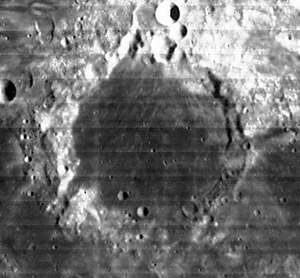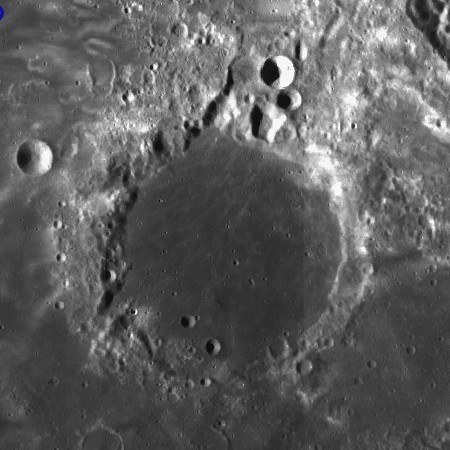Difference between revisions of "Goddard"
| Line 16: | Line 16: | ||
[http://en.wikipedia.org/wiki/Goddard_(crater) Goddard]<br /> <br /> | [http://en.wikipedia.org/wiki/Goddard_(crater) Goddard]<br /> <br /> | ||
==Additional Information== | ==Additional Information== | ||
| − | Depth data from [http://the-moon.us/wiki/Kurt%20Fisher% | + | Depth data from [http://the-moon.us/wiki/Kurt%20Fisher%20Crater%20Depths Kurt Fisher database]<br /> |
* Westfall, 2000: 1.71 km | * Westfall, 2000: 1.71 km | ||
* <br /> | * <br /> | ||
Latest revision as of 01:50, 16 April 2018
Contents
Goddard
|
Lat: 14.8°N, Long: 89.0°E, Diam: 89 km, Depth: 1.71 km, Rükl: 27 |
Images
LPOD Photo Gallery Lunar Orbiter Images Apollo Images
Maps
Description
Description: Wikipedia
Additional Information
Depth data from Kurt Fisher database
- Westfall, 2000: 1.71 km
Remarkable irregular elevated spot at the eastern section of Goddard's floor: http://bit.ly/2EwhCfQ
Nomenclature
- Robert Hutchings Goddard(October 5, 1882 – August 10, 1945), U.S. professor and scientist, was a pioneer of controlled, liquid-fueled rocketry. He launched the world's first liquid-fueled rocket on March 16, 1926. From 1930 to 1935 he launched rockets that attained speeds of up to 550 miles an hour. Though his work in the field was revolutionary, he was often ridiculed for his theories. He received little recognition during his own lifetime, but would eventually come to be called one of the fathers of modern rocketry for his life's work.
- Name given by Arthur and Whitaker in Rectified Lunar Atlas (1963) and approved by IAU in 1964 (Whitaker, 1999, p234).
LPOD Articles
Bibliography

